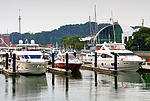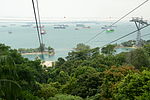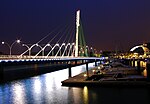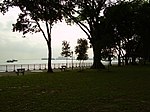Fort Siloso
1874 establishments in the British Empire1965 disestablishments in the British Empire19th-century architecture in SingaporeBritish rule in SingaporeCoastal fortifications ... and 11 more
Forts in SingaporeJapanese occupation of SingaporeMilitary and war museums in SingaporeMilitary history of Japan during World War IIMilitary installations of SingaporeMilitary of Singapore under British ruleNational monuments of SingaporeSentosaWorld War II museumsWorld War II prisoner of war camps in SingaporeWorld War II sites in Singapore

Fort Siloso is a decommissioned coastal artillery battery in Sentosa, Singapore. It consists of 12 such batteries which made up "Fortress Singapore" at the start of World War II, and saw action during the Battle of Singapore. The fort is now a military museum open to the public. The Surrender Chambers in Fort Siloso reopened in June 2017 with a refreshed exhibition and free admission.
Excerpt from the Wikipedia article Fort Siloso (License: CC BY-SA 3.0, Authors, Images).Fort Siloso
Siloso Road,
Geographical coordinates (GPS) Address External links Nearby Places Show on map
Geographical coordinates (GPS)
| Latitude | Longitude |
|---|---|
| N 1.2588888888889 ° | E 103.80805555556 ° |
Address
Fort Siloso
Siloso Road
098970 , Southern Islands
Singapore
Open on Google Maps











